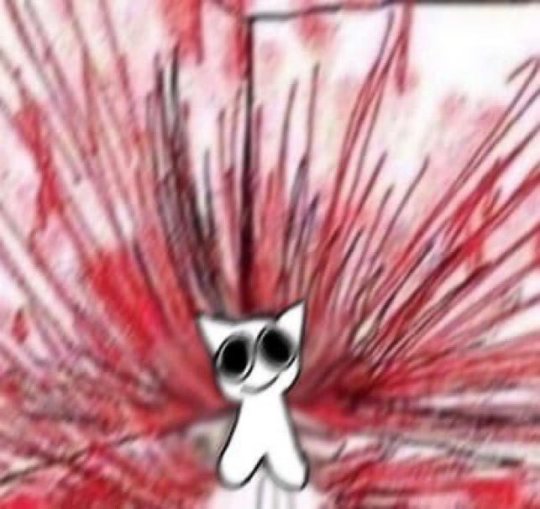#rna sequencing
Link
Single-cell RNA sequencing (scRNA-seq), a rapidly developing field of RNA sequencing of single cells, has recently made a breakthrough that could revolutionize cell type annotation. Using GPT-4’s powerful language model, Columbia University Mailman School of Public Health and Duke University School of Medicine researchers have demonstrated that cell types can be accurately annotated based on marker gene information, greatly reducing the effort and expertise required for this critical step. The researchers additionally developed an R programming suite named GPTCelltype tailored for the automated annotation of cell types by GPT-4.
Although cell type annotation is a fundamental step in scRNA-seq analysis, it has traditionally been a long and laborious process. This analysis is typically done by a human expert by comparing highly expressed genes with canonical cell type markers. The task requires a lot of knowledge and experience.
Despite the development of automated cell-type annotation methods, manual annotation based on marker genes remains widely used, raising the need for more efficient and accurate solutions.
Continue Reading
29 notes
·
View notes
Text

Exploring RNA Interference
Imagine a molecular switch within your cells, one that can selectively turn off the production of specific proteins. This isn't science fiction; it's the power of RNA interference (RNAi), a groundbreaking biological process that has revolutionized our understanding of gene expression and holds immense potential for medicine and beyond.
The discovery of RNAi, like many scientific breakthroughs, was serendipitous. In the 1990s, Andrew Fire and Craig Mello were studying gene expression in the humble roundworm, Caenorhabditis elegans (a tiny worm). While injecting worms with DNA to study a specific gene, they observed an unexpected silencing effect - not just in the injected cells, but throughout the organism. This puzzling phenomenon, initially named "co-suppression," was later recognized as a universal mechanism: RNAi.
Their groundbreaking work, awarded the Nobel Prize in 2006, sparked a scientific revolution. Researchers delved deeper, unveiling the intricate choreography of RNAi. Double-stranded RNA molecules, the key players, bind to a protein complex called RISC (RNA-induced silencing complex). RISC, equipped with an "Argonaut" enzyme, acts as a molecular matchmaker, pairing the incoming RNA with its target messenger RNA (mRNA) - the blueprint for protein production. This recognition triggers the cleavage of the target mRNA, effectively silencing the corresponding gene.
So, how exactly does RNAi silence genes? Imagine a bustling factory where DNA blueprints are used to build protein machines. RNAi acts like a tiny conductor, wielding double-stranded RNA molecules as batons. These batons bind to specific messenger RNA (mRNA) molecules, the blueprints for proteins. Now comes the clever part: with the mRNA "marked," special molecular machines chop it up, effectively preventing protein production. This targeted silencing allows scientists to turn down the volume of specific genes, observing the resulting effects and understanding their roles in health and disease.
The intricate dance of RNAi involves several key players:dsRNA: The conductor, a long molecule with two complementary strands. Dicer: The technician, an enzyme that chops dsRNA into small interfering RNAs (siRNAs), about 20-25 nucleotides long. RNA-induced silencing complex (RISC): The ensemble, containing Argonaute proteins and the siRNA. Target mRNA: The specific "instrument" to be silenced, carrying the genetic instructions for protein synthesis.
The siRNA within RISC identifies and binds to the complementary sequence on the target mRNA. This binding triggers either:Direct cleavage: Argonaute acts like a molecular scissors, severing the mRNA, preventing protein production. Translation inhibition: RISC recruits other proteins that block ribosomes from translating the mRNA into a protein.
From Labs to Life: The Diverse Applications of RNAi
The ability to silence genes with high specificity unlocks various applications across different fields:
Unlocking Gene Function: Researchers use RNAi to study gene function in various organisms, from model systems like fruit flies to complex human cells. Silencing specific genes reveals their roles in development, disease, and other biological processes.
Therapeutic Potential: RNAi holds immense promise for treating various diseases. siRNA-based drugs are being developed to target genes involved in cancer, viral infections, neurodegenerative diseases, and more. Several clinical trials are underway, showcasing the potential for personalized medicine.
Crop Improvement: In agriculture, RNAi offers sustainable solutions for pest control and crop development. Silencing genes in insects can create pest-resistant crops, while altering plant genes can improve yield, nutritional value, and stress tolerance.
Beyond the Obvious: RNAi applications extend beyond these core areas. It's being explored for gene therapy, stem cell research, and functional genomics, pushing the boundaries of scientific exploration.
Despite its exciting potential, RNAi raises ethical concerns. Off-target effects, unintended silencing of non-target genes, and potential environmental risks need careful consideration. Open and responsible research, coupled with public discourse, is crucial to ensure we harness this powerful tool for good.
RNAi, a testament to biological elegance, has revolutionized our understanding of gene regulation and holds immense potential for transforming various fields. As advancements continue, the future of RNAi seems bright, promising to silence not just genes, but also diseases, food insecurity, and limitations in scientific exploration. The symphony of life, once thought unchangeable, now echoes with the possibility of fine-tuning its notes, thanks to the power of RNA interference.
#science sculpt#life science#science#molecular biology#biology#biotechnology#dna#double helix#genetics#artists on tumblr#rna#rna sequencing#RNA interference#cell biology#cells#biomolecules#illustrates#scientific illustration#illustration#illustrative art#scientific research
10 notes
·
View notes
Text
When a computer slows down bc its processing a shit ton of sequencing data i say "gotta be patient, the computer is doing a big thinkie"
#genetics#sequencing#RNA sequencing#scRNA#single cell sequencing#genomics#this computer has 4 cores and idk how much fuckin ram#but damn if it still wont take 20 min to do the alignments#of just ONE sample#also that's just one step >.<#counts take a while too
14 notes
·
View notes
Text

Resident Upheaval
Using imaging mass cytometry and single-cell RNA sequencing to analyse the cellular composition and topology of the tissue changes with ulcerative colitis – inflammatory macrophages replace resident macrophages
Read the original article here
Image from work by Juan Du, Junlei Zhang, Lin Wang and Xun Wang, and colleagues
Zhejiang University School of Medicine, Hangzhou, China
Image originally published with a Creative Commons Attribution 4.0 International (CC BY 4.0)
Published in Nature Communications, June 2023
You can also follow BPoD on Instagram, Twitter and Facebook
5 notes
·
View notes
Text

Me when my teacher supervisor promised to warn me when the course inscription open and she didn't.
Now I need to find somebody to teach me rna-seq. Send help please oh my god is for my thesis
1 note
·
View note
Text
Dr. McCullough demands the EU, US pull out of World Health Organization over COVID response - LifeSite
#covid19#covid#sars cov 2#rna sequencing#rna therapeutics#vaccine#great reset#agenda 2030#World Economic Forum#Eurasian Economic Forum#Rothchild
1 note
·
View note
Text
Scientists have extracted RNA from an extinct species for the first time!!
They extracted it from a mummified Thylacine (Tasmanian Tiger) that was stored in Stockholm.
Just 2 months after the Thylacine was granted a protection status, the last of its kind passed from exposure in 1936 at the Beaumaris Zoo in Hobart.
It was the world's largest carnivorous marsupial, estimated to stand as tall as 51 inches and weighing around 66lb.
I'm very excited for the potential of bringing this species back - Jurassic Park style. We hunted this creature to extinction and now we may be able to fix that.
#thylacine#tasmanian tiger#science#rna sequencing#rna extraction#extinct animals#extinct species#extinction
1 note
·
View note
Text
Hepatitis C and HIV detection by blood RNA-sequencing in cohort of smokers.
Studies of viruses in human tissues have helped to better understand the human virome and its role in human disease. Through secondary use of human RNA and DNA sequencing to detect viruses, evidence has emerged regarding a healthy human blood virom. In a study of the peripheral blood DNA virome in 8,240 individuals, Moustafa and colleagues repurposed human WGS data and were able to map the WGS data to sequences of 94 different viruses, including 19 human viruses, and observed differences in virus profiles across age, sex and ancestry. Human Cytomegalovirus (CMV), HHV-6A, HHV-6B, Epstein–Barr virus (EBV) and Torque Teno Virus (TTV), Anellovirus) were among those detected. In a multi-tissue study repurposing RNA sequencing (RNA-seq) data by Kumata and colleagues, EBV, CMV, TTV and human papillomavirus were among the viruses observed in blood.
#DNA sequencing#RNA sequencing#Human Cytomegalovirus (CMV)#Epstein–Barr virus (EBV)#Torque Teno Virus (TTV)#human papillomavirus#human virome#Scientific Report#hepatitis c
0 notes
Text
Transcriptome sequencing – or RNA-seq – is a technique that essentially relies on sequencing every mRNA molecule in a sample, counting up the number of RNA molecules for each gene, and comparing these mRNA abundances with those obtained for a different sample (Figure 2.19).

Figure 2.19: Workflow for RNA-seq analysis of gene expression. RNA fragments are reverse transcribed and the resulting cDNA fragments are ligated with adaptors and sequenced. Each sequence is computationally aligned with the known genome sequence of the organism. The greater the number of RNA fragments (reads) per coding region, the greater is the expression of that gene.
"Plant Physiology and Development" int'l 6e - Taiz, L., Zeiger, E., Møller, I.M., Murphy, A.
#book quotes#plant physiology and development#nonfiction#textbook#complementary dna#pcr#transcription#genes#genetics#genome#rna sequencing#mrna
0 notes
Link
A collaborative effort between several medical departments at the University of Oslo led to the development of Cellsnake, a convenient tool for users to analyze single-cell RNA sequencing (scRNA-seq) data in an integrative manner, compatible with both Python and R. It can be incorporated into pre-existing workflow pipelines and can rapidly analyze several samples at once. It is open-source software, has a user-friendly interface for researchers, brings lower costs, and can be accessed through GitHub, PyPi, Docker, and Bioconda. scRNA-seq is a collection of transcriptome data at high resolution. By studying single cells, we can unlock intriguing heterogeneous characteristics present within populations of cells. While single cells can be analyzed using computational tools, they have many issues associated with them: they lack critical functions and modes for analyzing data in batches, and it can be difficult for users who lack computational expertise to install the required software.
In simple words, in scRNA-seq, gene expression is studied at the level of just a single cell. Conventional RNA sequencing, which is carried out in bulk, studies the average of the overall transcription expression within cell populations. scRNA was initially used in a limited capacity due to high costs and technical complexities. With advancements in computational technology over the past few decades, scientists have found greater accessibility to performing and studying high-level scRNA-seq analysis. Such access will provide crucial information related to the various states exhibited by cells, the interactions between cells, and the identification of novel cells.
Any standard workflow related to scRNA-seq data involves the following steps: filtering of data, normalization, scaling, reduction of dimensionality, clustering, visualization, analysis of differential expressions, analysis of functions, and finally, annotation of data. Some of the popularly used workflows for scRNA-seq include Seurat and Scanpy.
Continue Reading
35 notes
·
View notes
Text
RNA Sequencing Services | Market Size | Industry Analysis | 2035
Driven by growing innovation (evident from 300+ patents on RNA sequencing) by 70+ companies, the RNA sequencing services market is expected to grow at over 7% CAGR. The report features an extensive study of the current market landscape and future potential of the RNA sequencing services market. One of the key objectives of the report was to estimate the current market size and the future potential associated with the RNA sequencing services market.

0 notes
Text
the only thing my sister and i have to offer to the rise fandom is theories about how lou jitsu's dna recombined with the turtles
#i think about this a lot. like an embarrassing amount actually#i also think about what sorts of enzymes draxum mustve thrown into the ooze to trigger it all#i think there was probably a mystic factor as well#like a mystic catalyst#the turtles (and now splinter) would be considered transgenic organisms#and i dont have a whole lot of background in transgenic techniques so its a little harder for me#there are a lot of ppl at work who are experts on making humanized mouse models so i should ask them LOL#most of my research is on rna and protein expression and not dna modification#still compels me tho#megan we should try to find if anyone has sequence aligned turtle and human dna#im curious how similar the genomes are#and also what genes and consensus sequences are shared between reptiles and humans
6 notes
·
View notes
Text
#RNA Sequencing Market#RNA Sequencing#RNAA#RNA#sequencing#RNA Sequencing Market trends#RNA Sequencing Marketsize#RNA Sequencing Market growth
0 notes
Text

ouuughha
7 notes
·
View notes
Text
5 notes
·
View notes